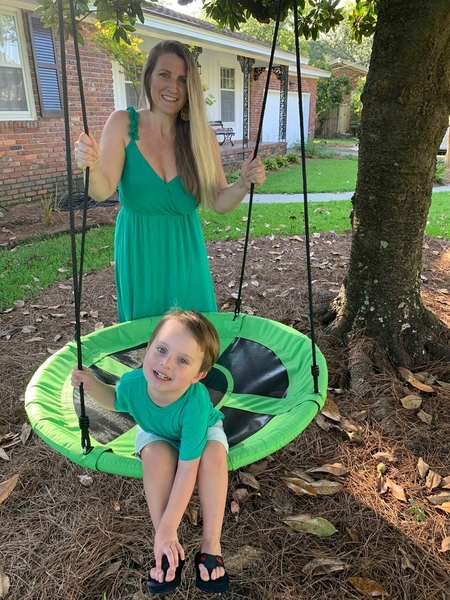When you think of a food allergy, you may think of more “classic” symptoms, such as hives, swelling and trouble breathing. But some people might have a type of food allergy that mainly affects the digestive tract. With this type of food allergy, proper nutrition is critical. Thankfully, there are many formulas for children with food allergies to help avoid allergic reactions while making sure they get the nutrients they need.
The Two Categories of Food Allergies
A food allergy falls into one of these categories:
- Immunoglobulin E (IgE) mediated – Your child’s immune system makes IgE antibodies when they eat a certain food. You might think of this type of allergy as a “classic” allergy.
- Non-IgE mediated – With this type of allergy, other parts of the immune system react to a certain food. Symptoms are not caused by an IgE antibody. They are caused by other types of immune cells. Non-IgE mediated food allergies involve the gastrointestinal tract. Symptoms can include vomiting, diarrhea, colic, reflux and bloody, mucousy stools.
Your child can have both IgE mediated and non-IgE mediated food allergies.
There are three types of non-IgE mediated food allergies that affect digestion:
- Eosinophilic [EE-oh-sin-oh-FILL-ick] esophagitis (EoE) – an allergic swallowing disorder caused by an inflamed the esophagus (part of the throat)
- Food protein-induced enterocolitis syndrome (FPIES) [eff-PIES] – inflammation in the small intestine and colon (large intestine)
- Allergic proctocolitis [prahk-toe-koh-LIE-tis] – inflammation in the lower intestine caused by an allergy to cow’s milk or soy proteins found in formula or breast milk
Kelli Miller, MSH, RD, LD, CNSC and Clinical Specialist with Cambrooke, is familiar with both types of food allergies. Her 3-year-old son, Cole, has EoE, a non-IgE mediated food allergy. With EoE, young children often have trouble eating, along with vomiting and poor weight gain. When he was a baby, Cole started having symptoms.
“Cole started refusing his bottles at day care. He went from drinking 7-ounce bottles to barely drinking 1 to 2 ounces,” said Kelli. “He would nurse at home, but I was never sure how much he was getting. When he was 9 months old, he was admitted to the hospital for dehydration.”
Cole’s doctor put him on a proton pump inhibitor (PPI) for reflux and an amino acid-based formula. The doctor also had Kelli remove common EoE triggers (milk, soy and wheat) from his diet.
Cole was officially diagnosed with EoE at 11 months old through an endoscopy. But he continued to have symptoms. So Kelli was referred to an allergist. Cole also tested positive to an IgE allergy to egg.

Cole, 3, has eosinophilic esophagitis (EoE). Photo credit: Kelli Miller
The Role of Formula in Food Allergies
With both IgE mediated and non-IgE mediated food allergies, the food (or foods) causing the symptoms must be removed from the diet.
Nutrition is a serious concern when you have to remove food from your infant’s or toddler’s diet. They need proper nutrition to grow and thrive. Special types of formula for food allergies can help you manage your child’s allergy while giving them valuable nutrition. Infants should ideally drink breast milk or formula for at least the first year of life. Sometimes children and adults with food allergies and other medical conditions can benefit from special formulas too.
There are five types of formula:
- Milk-based – the most common type of formula but is made from cow’s milk – a common food allergy in infants and children
- Soy-based – eight to 14% of children with a milk allergy will react to soy formula
- Partially hydrolyzed – cow’s milk proteins (whey, casein), are broken down into smaller pieces so the child can digest it more easily
- Extensively-hydrolyzed – casein, a cow’s milk protein, is broken down into smaller pieces for infants who can’t tolerate or are allergic to cow’s milk protein
- Amino acid-based – for infants, toddlers and older children who need extra nutritional support and contains no intact proteins, so most children can tolerate it; also called “elemental” formula
“After Cole turned a year old, we transitioned him to a junior amino acid-based formula, in addition to his restricted diet,” Kelli recalled. “He gradually started feeling better and eating better.”
Treating and Managing Food Allergies in Infants and Toddlers
An allergist can diagnose and treat IgE mediated and non-IgE mediated food allergies. It’s important to get a proper diagnosis if you suspect your child has a food allergy. Your child’s treatment could vary based on the type of allergy they have. For example, if your child has an IgE mediated allergy, your doctor may prescribe an epinephrine auto-injector to treat possible anaphylaxis, a serious allergic reaction. Or if they have a non-IgE mediated allergy, your child’s doctor may also treat it with certain medicines, in addition to dietary changes.
The only way to prevent allergic reactions is to avoid giving your child the foods that cause symptoms. You can do this by knowing how to read food labels. You should also know how to prevent cross-contact. Allergy-friendly recipes, like those found on Kids With Food Allergies’ (KFA) Safe Eats® Allergy-Friendly Recipes collection, can help you create nutritious and “free of” recipes at home. A registered dietitian can be a useful resource as well.
“Dietitians can also be helpful in providing meal and snack ideas and provide creative ways to incorporate formula, if needed, and nutritious foods,” Kelli said.
These days, Cole is an active, healthy preschooler. His diet is still free of egg, milk, soy and wheat, and he enjoys his amino-acid based formula – sometimes with chocolate almond milk for a treat. Kelli is grateful for specialized formulas that supplement his allergy-free food to help her manage his EoE.

“Being a dietitian, I am always stressing about Cole not getting enough nutrients in his diet,” said Kelli. “Not only does he have restrictions, but he is also very picky – like many other toddlers. Getting enough balanced nutrients is hard. He knows that the formula helps him grow, and I think that actually motivates him to drink it. Cole has actually been able to stay close to the 50th percentile for weight, height and body mass index, and I definitely owe that to his nutrient intake from amino acid-based formula.”
Managing food allergies of any kind can have challenges. But by working with doctors, learning how to choose free of your child's allergens, and getting support and resources, children with food allergies can grow and thrive.
“Facing a new diagnosis can be stressful and adjusting to a new diet and lifestyle can be overwhelming,” Kelli said. “But it gets easier and eventually the new way of life becomes second nature. While eating out can be difficult, we continue to make it a part of our life and ensure that we always have back-up snacks available if the allergy-friendly options are limited. Having a support group is helpful and staying involved can be beneficial for recipes and meal/snack ideas and a reminder that you are not in this alone.”



Comments (0)